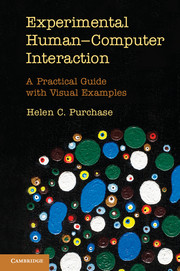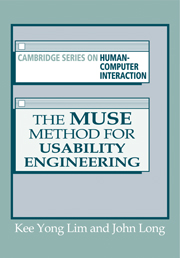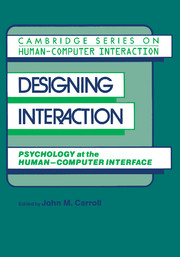Experimental Human-Computer Interaction
Experiments that require the use of human participants are time consuming and costly: it is important to get the process right the first time. Planning and preparation are key to success. This practical book takes the human-computer interaction researcher through the complete experimental process, from identifying a research question to designing and conducting an experiment, and then to analysing and reporting the results. The advice offered in this book draws on the author's twenty years of experience running experiments. In describing general concepts of experimental design and analysis she refers to numerous worked examples that address the very real practicalities and problems of conducting an experiment, such as managing participants, getting ethical approval, pre-empting criticism, choosing a statistical method and dealing with unexpected events.
- Presents a step-by-step approach, from research idea to publication, for experimental design using a practical and concrete approach
- Discusses at least 21 real research experiments, together with illustrations and, where appropriate, the actual data collected and/or the results reported
- Offers a detailed description of the most important statistical methods required, with complete illustrations as to how they should be applied
Reviews & endorsements
'Helen Purchase is a leading expert in computer science and this book reflects her considerable experience in the field. It gives practical, case study lead guidance on performing user studies in HCI, covering experimental design, procedure and analysis. It contains useful advice on best practice as well as covering potential pitfalls when conducting these experiments. Dr Purchase has produced an accessible guide that is a recommended read for anyone performing studies into how humans interact with computers.' Peter Rodgers, University of Kent
'This is an excellent primer for beginning researchers in HCI related topics who need to undertake experiments and/or evaluations as part of their research activity. The example based approach and clear no-nonsense style of writing make it a very readable text. This is not a book that will sit on your shelf, it will be used and referred to often - it will be mandatory reading for my commencing research students.' John Hosking, Australian National University
Product details
July 2012Paperback
9780521279543
256 pages
228 × 152 × 13 mm
0.35kg
72 b/w illus. 67 tables
Available
Table of Contents
- 1. Introduction
- 2. Defining the research
- 3. Experimental procedure
- 4. Data collection and qualitative analysis
- 5. Statistics
- 6. Reporting
- 7. Problems and pitfalls
- 8. Six principles for conducting experiments
- Appendix 1. Independent measures examples
- Appendix 2. Statistical formulae
- Appendix 3. Factor analysis example.





